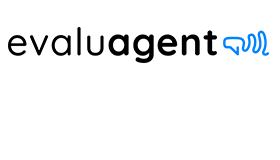Chris Mounce at EvaluAgent outlines five ways to reduce call centre wait times.
Call centre wait times are a strong indicator of customer experience and how a customer perceives your business. Negotiating the – sometimes confusing – array of Interactive Voice Responses (IVR) options only to wait long periods before speaking to an agent can leave customers feeling frustrated.
80/20 was the traditional target for call centres. That’s 80% of calls answered within 20 seconds. A recent survey by Microsoft showed that the majority of companies are falling short, with the telco sector achieving average call wait times of just over 2 minutes, stretching up to an eye-watering 35+ minutes in the energy sector.
Bringing your average wait time (AWT) down is crucial to improve the overall customer experience, reduce customer churn, and maintain your reputation.
Analyse Metrics
Changes to your call centre workflows should be data-driven. Start by reviewing your historical data to pinpoint key trends, such as frequent customer queries or peak traffic times. This is made possible with automated quality assurance software for your call centre.
Monitoring these four key metrics for your business will help to inform decision-making:
- Call Volume: The number of calls passing through your contact centre and the times of day.
- Average Handle Time (AHT): The amount of time your teams spend on a call.
- Abandonment Rate: The number of customers hanging up before they speak to an agent.
- After-Call Work (ACW): The amount of time spent by agents completing tasks after speaking with a customer.
Each of these metrics will help you to determine the resources you’ll need to optimise call handling, be it increasing staff headcount, improving your omnichannel support, or leveraging your other regional centres.
Streamline Call Times
Time spent on calls and ACW is time that could be spent answering a call in the queue, which isn’t a suggestion that customers should be rushed to end the call.
However, if you go back to your metrics, you may begin to identify data trends. Are there multiple customers calling with simple queries? If so, they could be resolved via your website FAQs.
Do agents spend longer than necessary on a call or ACW because they don’t have access to an easy-to-use, comprehensive knowledge base?
Reducing the call time itself allows your agents to get back to answering on-hold queues, helping to reduce the Average Speed of Answer (ASA).
Improve Staff Training
Call centre agents are your company’s public face. They’re often the first human touchpoint after a customer has already exhausted your website and web chat options to try and resolve their issue.
As well as being empathetic, call centre agents need to be knowledgeable. Customers expect your agents to resolve their queries, usually on the spot. Training is critical, both for better customer experience and employee engagement.
Onboarding training is not enough. Contact centre teams need ongoing 1-to-1 call centre agent coaching to learn best practices, stay up-to-date with business developments, and enhance soft skills like active listening.
Going hand-in-hand with training should be an up-to-date knowledge base that gives agents all the information they need to resolve common queries at their fingertips.
Chat Bots
Web chats are increasingly commonplace and offer consumers the chance to resolve their problems without picking up the phone. They’re a win-win solution as issues can often be resolved quicker on web chats than calls and agents can manage multiple chats simultaneously.
Savvy businesses can improve things further by implementing a chatbot to support the web chat functionality. Chatbots can provide instant responses in place of human agents and can be available 24/7, helping to cut costs.
Having effective chatbot support can reduce the volume of calls coming into your call centre in the first place, leading to lower wait times.
Efficient Call Handling
Call queue management is arguably the most important area to optimise if your goal is to reduce call wait times.
Many contact centres employ IVR trees to funnel calls to the right departments. However, IVR options should be reviewed regularly to ensure the options are as streamlined as possible, otherwise, callers may find themselves in a frustrating circular loop.
Providing customers with a positive experience can also help to reduce your wait times. Callbacks and virtual queues are popular options, as it means customers can carry on with their day while they wait for an agent to become free.
Last agent routing provides customers with a seamless experience, as they’re routed back to the same agent they spoke to previously, which can also help reduce call times.
Above all else, communication is vital. There will be times when call wait times are out of your control. You may be short-staffed, encountering technical difficulties, or experiencing unexpectedly high call volumes.
Taking a moment to honestly communicate that information to your customer can help them to empathise with you.
This blog post has been re-published by kind permission of EvaluAgent – View the Original Article
For more information about EvaluAgent - visit the EvaluAgent Website
Call Centre Helper is not responsible for the content of these guest blog posts. The opinions expressed in this article are those of the author, and do not necessarily reflect those of Call Centre Helper.
Author: EvaluAgent
Published On: 3rd Aug 2023 - Last modified: 9th Dec 2024
Read more about - Guest Blogs, EvaluAgent






 EvaluAgent provide software and services that help contact centres engage and motivate their staff to deliver great customer experiences.
EvaluAgent provide software and services that help contact centres engage and motivate their staff to deliver great customer experiences. 






























